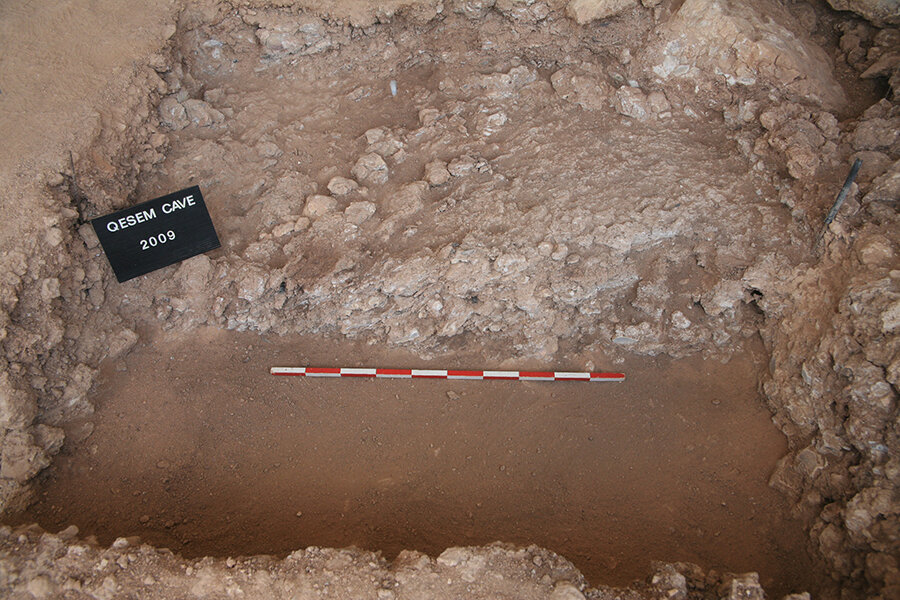300,000-year-old hearth sheds light on 'fire building' by early humans
Loading...
Archaeological evidence suggests that prehistoric humans started using fire millions of years ago. But researchers have long puzzled over exactly when humans learned to control fire and start using it in their everyday lives.
A new study suggests that it happened at least 300,000 years ago, in what is today Israel. A paper titled "Evidence for the repeated use of a central hearth at Middle Pleistocene (300 ky ago) Qesem Cave, Israel," published by scientists from Israel in the Journal of Archaeological Science, describes a hearth in Qesem Cave, an archaeological site located about eight miles eat of Tel Aviv. The cave served as a base camp for early humans and the hearth was repeatedly used for cooking meat, according to a press release from the Weizmann Institute of Science.
Archaeologists found a large number of flint tools, used for cutting meat near the hearth area, as well as inside it. But a few meters away from the hearth, archaeologists found flint tools of a different shape, suggesting that they were used for a different purpose, Ruth Shahack-Gross of the Kimmel Center for Archeological Science at the Weizmann Institute, and one of the authors of the paper, told the Monitor.
The types of ashes and animal bones found around the area point toward the repeated use of fire. Overall, the discoveries point toward the existence of a social order very much like we have today, she says.
To arrive at these findings, the team used a combination of infrared spectroscopy and micro-morphology techniques. Samples collected in and around the hearth area were mixed with potassium bromide. The combination was then inserted into an infrared spectrometer. Using infrared spectroscopy, the team determined that the samples contained bits of bones and soil that had been heated to very high temperature. This indicates that the area had been the site of a hearth.
Dr. Shahack-Gross then carried out a test on the micro-morphology of the ash. A cubic chunk of sediment from the hearth was impregnated with resin, frozen and hardened in the laboratory. Extremely thin slices were then examined under the microscope to determine the composition of the sediments, she says. The composition of the ash revealed that the hearth indeed was used repeatedly over time.
"As far as we know, our findings indicate that this is the first evidence of the earliest formal built fireplace that was used repeatedly by pre-historic humans," Shahack-Gross says.
This is unlike earlier evidence that point toward sporadic or occasional use of fire, she adds.
“These findings help us to fix an important turning point in the development of human culture – that in which humans first began to regularly use fire both for cooking meat and as a focal point – a sort of campfire – for social gatherings,” she said. “They also tell us something about the impressive levels of social and cognitive development of humans living some 300,000 years ago.”








